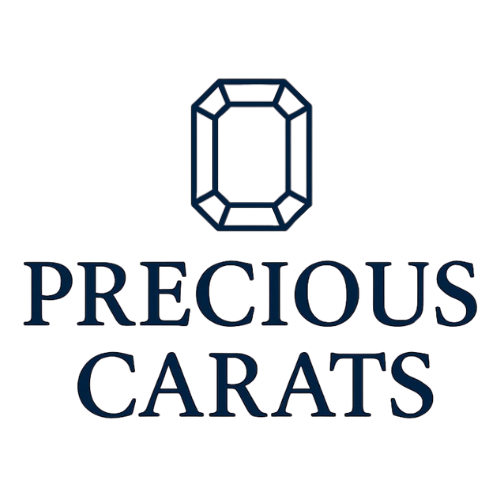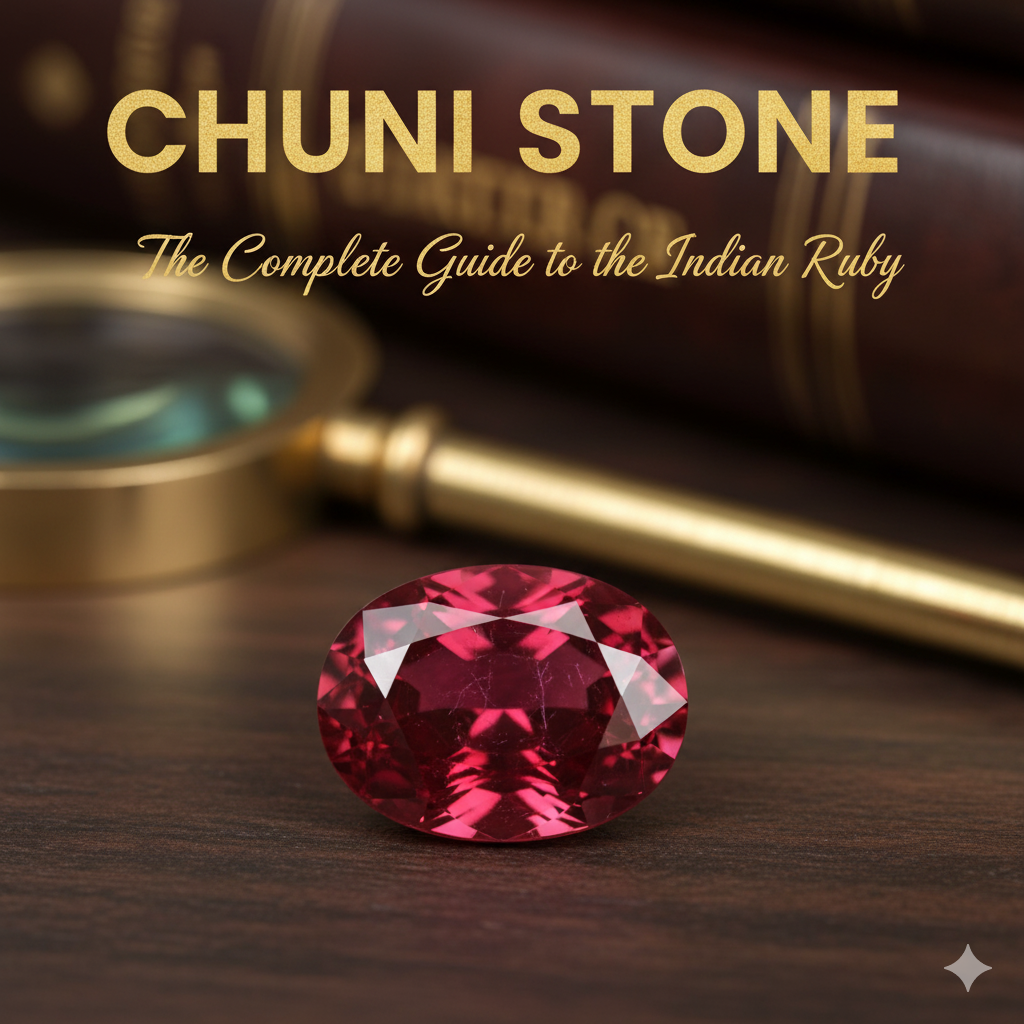Introduction
In the world of gemstones, some names vary by region and tradition. One such fascinating example is the Chuni stone, a gemstone revered across India for its deep red color and association with power, passion, and planetary influence. Internationally, Chuni is more widely recognized as Ruby, the red variety of corundum, one of the most valued gemstones in the Navaratna system of Vedic astrology.
For centuries, Chuni has symbolized royalty, vitality, and divine favor. In Indian astrology, Chuni stone is linked with Surya (the Sun), the planet of authority, health, and courage. From the courts of Mughal emperors to Tamil Nadu’s temple traditions, Chuni or Ruby has remained a gemstone of legends, often referred to as the ratnaraj — “the king of gemstones.”
1. What is Chuni Stone?
The term Chuni is a traditional Indian name for Ruby, especially popular in North India and Bengal. While the international gem trade prefers “Ruby,” millions across India continue to call it Chuni, particularly when discussing astrology, jewelry purchases, or gemstone remedies.
Scientifically, Chuni is part of the corundum family (Al₂O₃), with chromium as the trace element that gives it the fiery red hue. It shares its mineral family with sapphires but stands apart because of its unique red color.
2. Historical Importance of Chuni (Ruby)
Since ancient times, Chuni stone has been treasured as a gem of kings and warriors. Indian texts describe Rubies (Chuni) as blood-like stones infused with the Sun’s energy. Burmese chronicles narrate how warriors believed that inserting Chuni under their skin made them invincible in battle.
The Mahabharata and Puranas mention Chuni as one of the sacred offerings to deities. In Mughal courts, Rubies were exchanged as royal gifts, symbolizing valor and imperial might. Globally too, from Sri Lanka to Burma and Siam, Chuni stones were reserved for royalty.
3. Gemmological Properties of Chuni Stone
– Mineral Family: Corundum
– Color: Deep pigeon blood red to pinkish red
– Hardness: 9 on Mohs scale (second only to diamond)
– Refractive Index: 1.76–1.77
– Specific Gravity: 3.9–4.1
– Pleochroism: Red to purplish red tones
These properties make Ruby (Chuni) one of the most durable and desirable gemstones, suitable for rings and heirloom jewelry.
4. Sources and Origins of Chuni (Ruby)
The best quality Chuni stones (Rubies) historically came from Burma (Myanmar) — especially the Mogok mines, famous for their “pigeon blood red” rubies. Today, sources include:
– Burma (Myanmar) – Finest quality, transparent, rich red.
– Mozambique (Africa) – Popular in modern gem trade, vivid red stones.
– Sri Lanka (Ceylon) – Lighter pinkish rubies.
– Tanzania – Produces darker, more included rubies.
– India – Small deposits found in Odisha and Karnataka.
Each origin has distinct character, but Burmese Chuni remains the gold standard in astrology and gem collecting.
5. Astrological Significance of Chuni
In Vedic astrology, Chuni stone (Ruby) is associated with the Sun (Surya) — the planet of vitality, authority, health, and recognition. Surya is considered the soul of the cosmic order, and Ruby represents his energy in gemstone form.
Who Should Wear Chuni?
– People with Leo (Simha Lagna/Rashi).
– Those with weak Sun in their horoscope (lack of confidence, health issues, lack of recognition).
– Individuals seeking authority, government favor, or leadership positions.
– Those wishing to overcome depression and low vitality.
6. Benefits of Wearing Chuni Stone
1. Boosts Confidence & Authority – Ruby (Chuni) is believed to strengthen self-expression and leadership.
2. Improves Health – Especially related to heart, eyes, and circulation.
3. Attracts Fame & Recognition – Helps in careers related to politics, administration, and public life.
4. Enhances Relationships – Brings warmth, loyalty, and courage.
5. Protects Against Negative Energy – Considered a shield against envy and malice.
7. How to Wear Chuni Stone
– Metal: Gold is the most recommended setting.
– Finger: Ring finger of the right hand.
– Day & Time: Sunday morning during sunrise.
– Weight: Minimum 5 ratti (4.5–5 carats) or as astrologically prescribed.
– Mantra: “ॐ सूर्याय नमः” (Om Suryaya Namah).
– Rituals: Must be purified in Gangajal and energized before wearing.
8. Identifying Genuine Chuni (Ruby)
Because Rubies are rare, the Chuni stone market is full of treated or synthetic stones. Common treatments include:
– Heat treatment – Widely accepted to enhance color.
– Glass filling – Fills cracks, lowers value, not astrologically effective.
– Synthetic Rubies – Lab-made stones that look real but hold no astrological value.
Tips for buyers:
– Always ask for certification from reputed labs.
– Check for natural inclusions like rutile needles or zoning.
– Avoid “too perfect” cheap stones — likely synthetic or glass filled
9. Market Value of Chuni (Ruby)
The price of Chuni stone varies enormously:
– Burmese Rubies: ₹50,000 – ₹5 lakh per carat (premium grade).
– Mozambique Rubies: ₹10,000 – ₹80,000 per carat.
– Sri Lankan Chuni: ₹8,000 – ₹30,000 per carat.
– Indian Rubies: Lower quality, often included, ₹5,000 – ₹15,000 per carat.
Big, untreated, transparent Chuni stones above 3–4 carats are extremely rare and fetch record prices.
10. Chuni vs Other Red Gems
Often, cheaper substitutes are sold as Chuni stone:
– Garnet – Darker, lacks brilliance, softer.
– Spinel – Beautiful red but different crystal structure.
– Tourmaline – Pinkish tones, much softer.
While these may look similar, astrologers emphasize only Ruby (Chuni) has Surya’s planetary blessings.
11. FAQs on Chuni Stone
Q1: Can everyone wear Chuni stone?
Not necessarily — it must be astrologically suitable.
Q2: Is Burmese Chuni better than African Ruby?
Yes. Burmese Rubies are historically considered the best due to their vivid red and fluorescence.
Q3: What carat weight is ideal for Chuni?
Generally 5–7 ratti, but depends on horoscope and body weight . general guideline is 1 ratti for every 10 kg of body weight . But if wearing a good quality Chuni , 2.25 ratti is the minimum
Q4: Can Chuni be worn with other Navaratna gems?
Yes, in Navaratna rings where Ruby represents the Sun.
Q5: How to clean Chuni stone?
Mild soap and water. Avoid harsh chemicals.
Conclusion
The Chuni stone, known globally as Ruby, is more than just a dazzling red gem. It is the fiery representative of the Sun, embodying power, vitality, and prestige. In Indian astrology, it is the king of gems, recommended for those seeking authority, recognition, and renewed energy.
From Burmese pigeon-blood Rubies to African and Sri Lankan varieties, Chuni stone remains a timeless choice for both jewelry and spiritual remedies. When chosen carefully — certified, untreated, and astrologically prescribed — Ruby becomes not just an ornament but a radiant companion, illuminating the path of its wearer with the eternal glow of the Sun.

